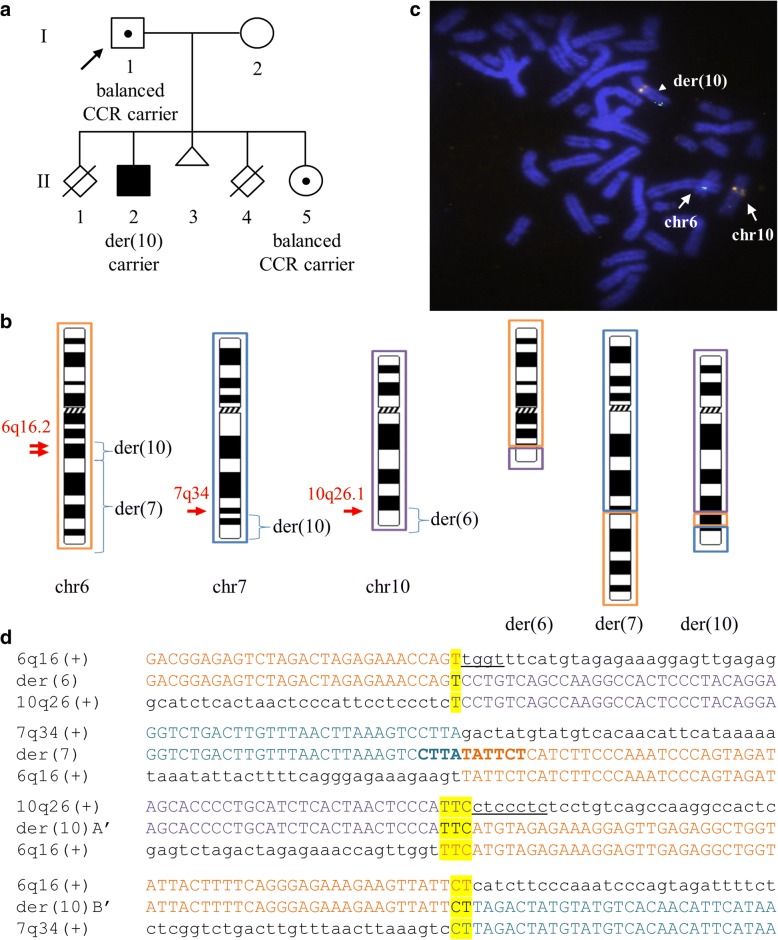Fig. 1.
Family Pedigree, Whole-Genome Mate-Pair Sequencing and FISH Results. a Family pedigree depicting the non-affected father (I:1), non-affected daughter (II:5), and affected son (II:2) with severe intellectual disability. The family also suffered from two stillbirths (II:1 and II:4) and one miscarriage (II:3). b Ideograms displaying the normal and derivative chromosomes 6 (orange), 7 (blue) and 10 (purple) (not to scale). The approximate breakpoint positions on 6q16.2, 7q34, and 10q26.1 are indicated by arrows, and the derivative chromosomes onto which each segment is translocated are also shown. c FISH results using a custom-designed probe within 6q16.3 (green signal) and a control probe within 10q11.22 (orange signal) on metaphase spreads from the non-affected daughter. Both signals are visible on der(10) (arrowhead), and as expected, a green and an orange signal were seen on normal chromosomes 6 and 10 (arrows), respectively. The same results were also observed in the non-affected father (not shown). d CCR breakpoint sequences as identified by WG-MPS and verified by Sanger sequencing. Derivative chromosome sequences (middle line) and matching reference sequences are in capital letters. Microhomology is highlighted, deleted sequences around the breakpoints are underlined, and duplicated sequences are in bold letters

